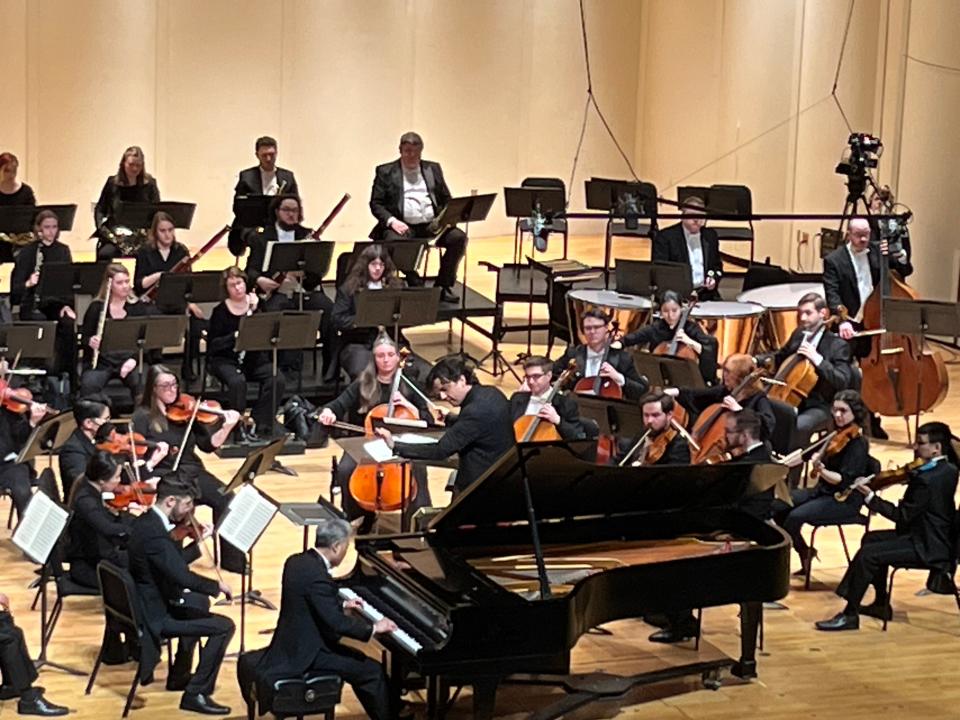Review: Evansville Philharmonic Orchestra opens 2024 season with a fine performance
- Oops!Something went wrong.Please try again later.
The 2024 season of the Evansville Philharmonic Orchestra opened on a cold Saturday night on Jan. 20. The surprisingly large and responsive audience filled the warm Victory Theatre for a performance of chefs-d’oeuvre from three of the greatest composers in the western tradition — Bach, Beethoven, and Brahms.
We live in an era when so many accepted cultural monuments are debunked or challenged, but the works tonight displayed both the astonishing accomplishment of the individual composers as well as the long and laudable tradition of musical development in which all three of them worked.
The program began with a performance of Johann Sebastian Bach’s "Brandenburg Concerto No. 3," a wonderfully bright composition. Despite Bach’s original setting for nine strings plus continuo, Roger Kalia felt he should include all the EPO’s string players in this performance with a continuo of four basses and amplified harpsichord, ably played by Tom Drury. Concertmaster Jack Bogard improvised a fine cadenza in the interim between the two ensemble movements.
The performance of Beethoven’s "Piano Concerto No. 3" was nothing short of astonishing. Soloist Jon Nakamatsu (who has performed here before) played with electric and electrifying precision. Even Kalia remarked on his “amazing artistry,” which was no exaggeration. Absolutely in sync with the conductor and orchestra, Nakamatsu delivered a refined and note-perfect (and beautifully phrase-perfect) reading of Beethoven’s concerto.

The second half of the concert featured Johannes Brahms’ final symphony, the famous symphony no. 4 in E-minor. This is a daunting work, long (four movements), dense, and musically complicated.
At intervals between movements, Roger Kalia had to wipe the sweat from his brow as he prepared for the succeeding section. Brahms well understood the instruments he wrote for (their timbre and range), and all sections of the orchestra were strategically featured time and again.
The second movement, for instance, begins with a wonderful, mellow horn choir; the final movement engages the trombones. As Kalia mentioned in his prefatory comments, the final movement is constructed on a musical form that originated in 17th Century Spain, a passacaglia.
Like the other works in the program, Brahms’ symphony, though singular and remarkable, places itself in a longstanding musical tradition that encompasses the other two works on the program. So many instrumental voices were prominent in Brahms’ symphony that, at the conclusion of the concert, the conductor spent many moments (with good reason) identifying the various performers.
And we in the audience acknowledged both the fine performance as well as the long musical legacy of which we are the inheritors.
This article originally appeared on Evansville Courier & Press: Evansville Philharmonic Orchestra opens 2024 season with a fine performance

